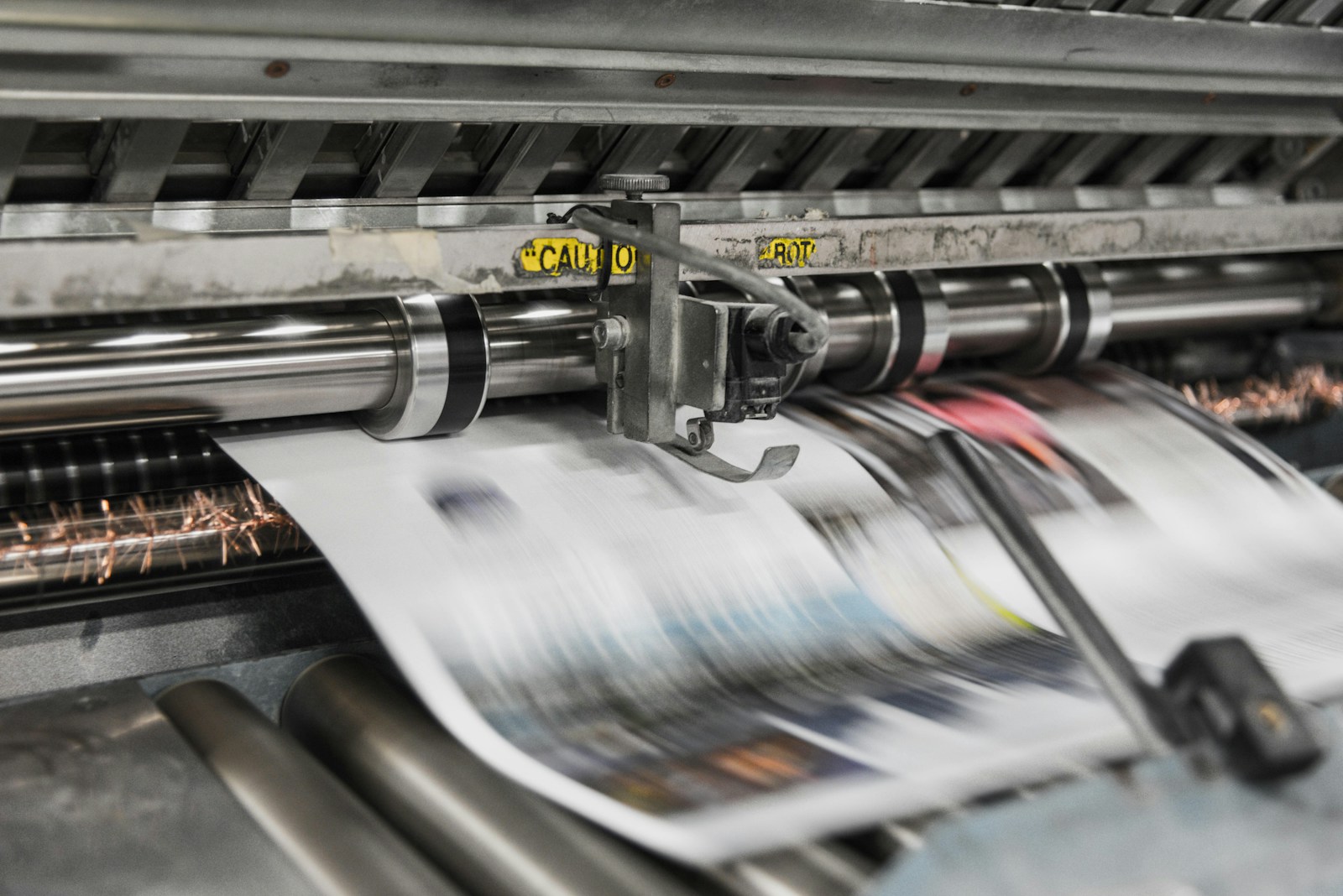As 2025 unfolds, the printing industry finds itself at a crossroads—far from being overshadowed by digital media, it is experiencing a vibrant renaissance driven by innovation, sustainability, and rapid technological advancement. Industry leaders who embrace this transformation are set not only to survive but thrive, with global revenues projected to surpass an impressive $960 billion by year’s end. Let’s dive deeper into the compelling forces shaping the printing landscape in 2025.
Economic Trends: Growth & Resilience
Despite predictions of decline, the printing sector continues to demonstrate resilience and adaptability:
- Global Market Expansion:
The global printing industry is forecasted to achieve a value of approximately $960 billion in 2025, representing steady annual growth of around 2.5%. The key drivers behind this robust expansion include surging demands in sectors such as packaging, textiles, promotional materials, and digital printing solutions, underscoring a diversified market. - Commercial Printing Comeback (U.S.):
In the United States, commercial printing is seeing a notable rebound. This resurgence is largely supported by strategic economic incentives, aggressive adoption of automation technologies, and targeted investments in artificial intelligence (AI). Companies that prioritize innovation in workflow optimization are reporting improved productivity and increased profitability.
Technological Innovations Redefining Print
Advancements in technology are fundamentally reshaping the industry, providing unprecedented efficiency and customization:
- Artificial Intelligence Integration:
AI’s role has evolved beyond mere hype—it’s now central to operations. AI-driven technologies enable predictive maintenance, streamlined inventory management, and hyper-personalized marketing campaigns. Industry surveys reveal that more than 60% of print service providers are significantly boosting AI investments, emphasizing AI’s pivotal position in the future of print. - Digital Printing Revolution:
Digital printing continues its rapid ascent, with digital presses expected to surpass 50% of total market share in 2025. The shift from analog printing methods allows for rapid, flexible, and high-quality production, making short-run, on-demand, and personalized printing more accessible and cost-effective than ever before.
Sustainability: Moving from Optional to Essential
Sustainability is no longer just a niche concern—it has become integral to the printing industry’s operations and customer expectations:
- Eco-Friendly Initiatives:
Printers are actively implementing sustainable practices like using recycled materials, biodegradable and vegetable-based inks, and energy-efficient machinery. A substantial portion of consumers now prioritize sustainable packaging, directly influencing printing decisions across various industries. - Data-Driven Environmental Management:
Leveraging advanced analytics, print businesses track and reduce their ecological footprint in real-time. Compliance with evolving environmental regulations and customer-driven sustainability demands ensures that responsible practices remain at the forefront of business strategy.
Strategic Moves: Diversification and Consolidation
Strategic diversification and targeted mergers are redefining market dynamics:
- Diversification into New Markets:
To maintain competitive agility, printers are venturing into dynamic segments such as flexible packaging, textile printing, promotional items, and labeling. These expansions allow companies to mitigate risks and capture new revenue streams in rapidly growing sectors. - Major Acquisitions & Consolidation:
Notably, Xerox’s recent $1.5 billion acquisition of Lexmark underscores a trend of consolidation aimed at enhancing global market presence. Such strategic mergers facilitate integration of advanced supply chain capabilities and innovative color printing technologies, reshaping industry competition and capabilities.
Security & Cloud Computing: Modernizing Infrastructure
As print technologies advance, cybersecurity and cloud integration become paramount:
- Enhanced Security Measures:
Rising cybersecurity threats have led to increased investments in AI-driven security protocols for print infrastructure. Protecting sensitive data against breaches has become critical, driving demand for advanced authentication methods and secure print management solutions. - Cloud Adoption and Print Management:
Cloud-based printing solutions offer scalable, efficient workflows. Although concerns about data privacy persist, the benefits of remote print management, reduced infrastructure costs, and simplified maintenance drive widespread adoption among small and large enterprises alike.
3D and On-Demand Printing: The Future is Flexible
Finally, the explosive growth in 3D and on-demand printing services is reshaping manufacturing and logistics:
- Expansion of 3D Printing:
The 3D printing industry is experiencing accelerated growth, driven by high demand across automotive, aerospace, healthcare, and consumer sectors. The capability to produce intricate, customized parts on-site significantly reduces production costs, inventory storage, and turnaround times. - On-Demand Printing Services:
On-demand printing is becoming increasingly popular, providing cost-effective, low-waste alternatives to traditional large-batch production. This approach dramatically reduces excess inventory and storage expenses, while simultaneously meeting real-time consumer demands with greater precision.
Snapshot: Printing Industry Trends for 2025
| Trend | Details | Impact |
|---|---|---|
| Market Growth | Projected at $960 billion, 2.5% annual growth | Stable, diversified industry |
| AI Integration | Predictive maintenance, personalized printing | Improved efficiency, reduced costs |
| Digital Dominance | Digital presses over 50% market share | Faster, customized printing solutions |
| Sustainability | Eco-friendly inks, recyclable materials | Meeting consumer expectations, regulatory compliance |
| Strategic Expansion | Diversifying into packaging, textiles, promotions | Reduced risk, increased revenues |
| M&A Activity | Xerox-Lexmark acquisition at $1.5 billion | Market consolidation, enhanced capabilities |
| Cloud & Security | Cloud management, enhanced cybersecurity | Efficient workflows, data protection |
| 3D & On-Demand | Rapid adoption in aerospace, automotive, healthcare | Lower logistics costs, higher customization |
In 2025, the printing industry is characterized by innovation and adaptability. Companies that align themselves with these transformative trends—embracing digital technologies, sustainability, and strategic diversification—are poised for long-term success in this dynamic marketplace.
Key Takeaways
- The printing industry is actually growing, not shrinking, with a projected value of $357 billion by 2025.
- AI and digital transformation are making print businesses faster and smarter.
- Sustainability and automation aren’t just bonuses—they’re what set the leaders apart now.
Digitization Transforming the Printing Industry
Digital technology is shaking up the printing industry in 2025. With the market hitting $357 billion this year, print businesses are leaning into digital tools to keep up with what customers want and to work smarter, not harder.
Digital Printing Technology Advancements
The latest digital printing technologies are honestly impressive—faster, sharper, and more versatile than ever. High-speed inkjet presses, for example, are now going toe-to-toe with offset for medium-length jobs, both in quality and cost. Some of these machines are pumping out up to 15,000 sheets per hour and still keeping colors spot-on.
Nanographic printing has come a long way, too. Now, you can print on almost anything and barely use any ink. That cuts costs by as much as 30% compared to the old ways.
UV LED curing systems are the new standard. They dry instantly and use about 60% less energy than the traditional UV setups. That means faster jobs and more creative options for customers.
Textile digital printing is booming, especially for smaller shops. Direct-to-garment printing has become a lot more affordable, and the results—well, they look better and last longer in the wash than ever before.
Workflow Automation and Integration
AI-driven workflow systems are now handling the entire print process, from the moment a file comes in until the job is finished. These systems catch mistakes before they become expensive problems, cutting waste by up to 25%.
Cloud-based print management is making it easier for clients, designers, and operators to work together. Customers can actually see where their project is at, in real time.
Smart factories, packed with IoT-connected machines, are now predicting when something might break down and scheduling maintenance before it happens. That’s led to about 40% less downtime in the more modern print shops.
Robots are taking care of the heavy lifting—literally. They’re loading paper, packing boxes, and freeing up staff to focus on quality and creativity instead of repetitive tasks.
Personalization Through Variable Data Printing
Variable data printing (VDP) isn’t just about swapping out names anymore. These days, VDP can pull from customer databases to create totally personalized materials—sometimes boosting response rates by 30-50%. Not bad, right?
Print is blending with digital, too. Think QR codes, AR, and NFC tech—printed pieces that come alive and let you track how people interact with them.
AI is even helping brands predict what customers want, so print campaigns can be more relevant and targeted.
Personalized packaging is everywhere, from limited-edition runs to custom unboxing experiences. You can now get cost-effective, unique packaging even if you only need 50 units.
Sustainability Initiatives and Green Solutions
Environmental responsibility isn’t just a talking point in 2025—it’s a real priority for the printing industry. Companies are switching to greener materials, cutting energy use, and rethinking waste, all in a push to shrink their carbon footprint.
Eco-Friendly Printing Materials
Sustainable inks are now pretty much the norm. Water-based and vegetable-based inks are replacing the petroleum stuff, which means way less VOCs and better air quality in the shop.
Recycled paper is everywhere. Most printers are using at least 50% post-consumer waste, and some high-end providers are going all-in with 100% recycled options.
Biodegradable substrates are catching on for short-term prints—corn-based plastics, algae-derived stuff, hemp papers—these materials break down naturally after use.
Some popular eco-friendly materials in 2025:
- Bamboo-based papers
- Stone paper (from calcium carbonate)
- Papers made from ag waste like wheat straw or banana fiber
- Bio-plastic films for packaging
Energy-Efficient Production Processes
Today’s printing equipment is a lot less power-hungry. The latest digital presses use up to 40% less electricity than machines from just a few years ago, and they’re faster, too.
Solar panels are popping up on print shop rooftops everywhere. Some big operations are getting 30-60% of their energy from the sun, with a few almost hitting carbon-neutral.
Smart automation helps manage energy by powering down idle machines and tweaking climate control based on what’s actually happening on the floor.
LED-UV curing has mostly replaced the old-school UV and heat-based methods. This switch means up to 70% less energy use, quicker jobs, and no more ozone emissions.
Waste Reduction and Recycling Practices
Print-on-demand is slashing overprinting. Digital workflows mean you only print what you need, so paper waste drops by 25-40% compared to the offset days.
Closed-loop recycling is the new standard. Many printers are collecting and reusing their own waste, making the whole process more circular.
Water recycling systems are capturing and reusing up to 95% of water in printing operations. That’s a huge deal for sustainability.
Chemical recovery systems are pulling solvents and other chemicals out of the waste stream to be reused. This cuts hazardous waste by up to 80% and saves money.
Some larger facilities are even turning unrecyclable paper and packaging into energy, generating their own supplemental electricity from waste.
Impact of Automation on Production and Operations
Automation is really changing the game on print production floors. There’s a lot less manual work, things move faster, and the final product is more consistent—though, of course, this means the workforce is having to adapt too.
Robotics and Smart Machinery in Print
Robots have totally changed how materials move around in print shops. Automated guided vehicles (AGVs) now zip paper rolls and finished jobs through the plant, making things safer for workers and cutting down on damage.
Smart presses can now switch settings between jobs with barely any human help. It’s not unusual for one person to run several machines at once, bumping up productivity by 30-40% in some places.
Everything’s more connected, too. Modern presses talk directly to prepress and finishing lines using standards like JDF, so the workflow just keeps moving with fewer hiccups.
Key Automation Technologies in Printing:
- Robotic material handling systems
- Self-adjusting presses
- Integrated workflow management
- Predictive maintenance systems
Automated Quality Control Systems
AI is taking over quality control. High-speed cameras and sensors now scan every print in real time, catching problems no human could spot at full speed.
These systems can pick up on color issues, misalignments, and other flaws instantly, cutting quality-related waste by up to 25% in some operations.
Closed-loop systems go a step further—they tweak press settings automatically if something starts drifting, so you don’t have to stop the run.
All the data from these systems is gold. Print companies use it to spot recurring problems and keep improving, which means better results over time.
Labor Market Shifts and Skills Development
The workforce is changing, too. Traditional press operators now need to be comfortable with digital systems and basic IT. More and more, their job is to monitor and manage, not just run the press.
There’s a big demand for tech-savvy folks who can maintain and program automated systems. Finding people who know both print and IT? That’s a real challenge.
Technical schools are catching up, though. Printing courses now include programming, data analysis, and predictive maintenance.
Some workers are understandably worried about automation taking jobs, but so far, it’s more about changing what the job looks like than making people obsolete. The most forward-thinking companies are investing in retraining their teams.
Market Trends and Future Opportunities
The printing industry is moving fast, with growth projections hitting $357 billion by 2025 and $443 billion by 2028. There’s a lot happening, and honestly, it’s opening up some pretty interesting opportunities.
Emerging Print Applications and Sectors
3D printing is still shaking up manufacturing. It’s not just for prototypes anymore—now it’s being used to make end-use parts, especially in healthcare, automotive, and aerospace.
Smart packaging is catching on, with QR codes, NFC, and RFID connecting physical products to digital experiences. It’s a clever way to boost engagement and gather data.
Textile printing is on the rise, too. Digital methods make it easy to customize and print on demand, which cuts waste and lets designers get creative at scale.
Functional printing—like putting electronic components directly onto different materials—is opening up whole new markets. Printed sensors, batteries, flexible displays… it’s kind of wild what’s possible now.
Changing Customer Demands and Expectations
Sustainability is at the top of everyone’s list. Companies are responding with greener inks, recycled paper, and less waste. If you can prove you’re environmentally responsible, you’ve got a leg up.
Personalization is still a big deal. People want print products that feel unique to them.
Speed and convenience matter more than ever. Same-day or next-day delivery isn’t just a nice bonus anymore—it’s what customers expect.
And print has to play nice with digital. Customers want the two worlds connected, whether it’s through AR or other interactive tech.
Frequently Asked Questions
The printing industry is moving fast, and there’s a lot to keep up with. Here are some of the questions people are asking most often right now.
What technological advancements are anticipated to drive the printing industry by 2025?
Digital printing tech is set to take over more than half the market by 2025. That’s a huge shift from the old days.
3D printing keeps expanding, moving from prototyping into full-on production, especially in industries like healthcare and manufacturing.
Smart printers with IoT are becoming the norm, letting companies monitor machines remotely and predict when maintenance is needed.
Variable data printing is getting way more advanced, so brands can offer super-personalized prints quickly and at scale.
How are sustainability efforts expected to impact the printing industry’s practices and products in the next few years?
Eco-friendly materials are now the baseline, not just a premium upgrade. More companies are using biodegradable inks, recycled paper, and sustainable substrates.
Waste reduction tech is everywhere, helping cut down on material use from start to finish.
Energy-efficient machines are replacing the old power-hungry ones, using less electricity without sacrificing quality.
Reducing carbon footprints is becoming a major selling point. Clients want to work with printers who can prove they’re serious about the environment.
In what ways is automation transforming the operational efficiency of printing businesses?
Workflow automation means fewer hands are needed from order to delivery, which streamlines everything and cuts down on mistakes.
AI-powered prepress can now fix and optimize files automatically, making prep work faster and less prone to error.
Robotic systems for handling materials and finished goods are popping up in bigger print shops, cutting labor costs and boosting throughput.
Automated quality control with computer vision is more accurate than people, helping ensure high-quality output every time.
What challenges and opportunities could the digitization of the printing industry present to existing companies?
Traditional printers face a big hurdle with the cost of new digital equipment, but it’s also a chance to offer services they couldn’t before.
Digital workflows make things like print-on-demand and short runs possible, opening up markets that didn’t make sense with older methods.
Cloud-based platforms are shaking up the way printers find and keep customers. There’s a lot of potential to reach new audiences.
Of course, with more digitization comes more concerns about data security. Companies that can keep sensitive info safe will have the edge.
How are consumer trends and demands likely to shape the product offerings of the printing industry going forward?
Personalization isn’t just a nice-to-have anymore—it’s what people expect. Folks want print products that really speak to them, not just generic stuff off the shelf. If it doesn’t feel tailored, it probably won’t make the cut.
And let’s be honest, nobody’s willing to wait around these days. Fast turnaround is just the baseline. Printers are hustling to upgrade their gear and streamline processes, because if you can’t deliver quickly, you’re out.
Printing straight from your phone? That’s turning into a must. People want things simple—no clunky steps or weird software. If it doesn’t work from your device in a snap, forget about it.
Oh, and interactive print? That’s starting to catch fire, especially for marketing. Mixing print with digital—like tossing in a QR code or a bit of AR—makes the whole experience way more engaging. It’s not just paper anymore; it’s a bridge to something bigger.
What strategies should printing companies adopt to remain competitive in the face of digital transformation?
Honestly, just sticking to traditional printing isn’t really going to cut it anymore. The companies that are still standing out are the ones branching out—offering things like design help, fulfillment, maybe even dipping into marketing services. It’s all about adding a bit more value beyond just ink on paper.
And let’s not forget the people. If you’re not investing in your team’s education, you’re probably missing out. Technology moves fast, and your staff needs to keep up if you want to keep your customers happy (or at least not confused).
Teaming up with tech providers? That’s a smart move. Why try to build everything from scratch when you can partner up and stay current—without blowing your whole budget on development?
One last thing: customer experience is starting to matter just as much as the actual print quality. If you can make ordering, customizing, and getting those print products smooth and painless, you’re already ahead of the game.







